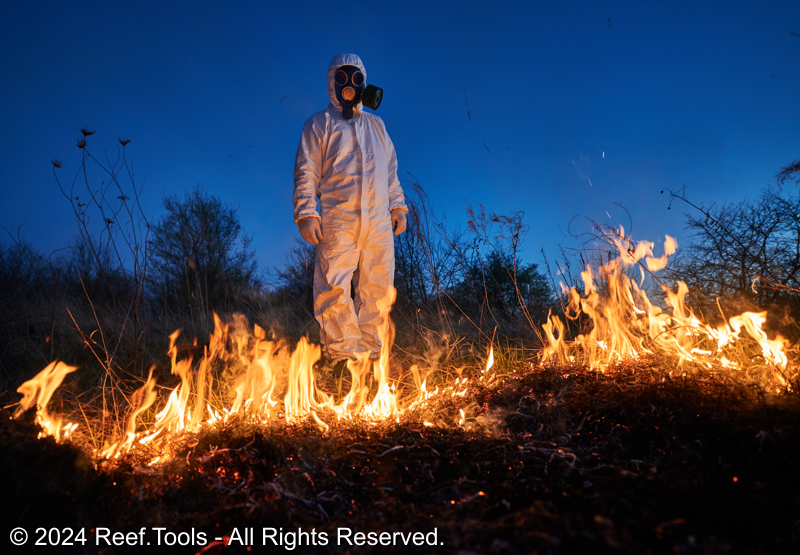
Bromine (Br)
Halogens
Atomic Number: 35
Last Reviewed: 12/15/2024
Bromine is a halogen element commonly found in seawater as bromide ions (Br⁻). It is the seventh most abundant element in natural seawater and plays an important, though indirect, role in reef aquariums.
It contributes to the overall ionic balance of marine environments and is involved in various chemical and biological processes. While not a primary nutrient for corals, bromine influences certain reef dynamics, including coral coloration and skeletal growth in specific organisms.
Natural Seawater Levels
Bromine concentrations in natural seawater range from 65 to 70 mg/L. These levels are stable across most marine environments, making bromine one of the more consistent trace elements in seawater. (Tréguer et al., 2021)
Risks
Deficiency:
- Bromine deficiencies are uncommon but may occur in closed systems with insufficient replenishment from water changes.
- Low bromine levels can potentially reduce polyp expansion and contribute to dull coloration in corals.
Excess:
- Overdosing bromine can lead to toxicity, especially in Small Polyp Stony (SPS) corals. Symptoms may include tissue recession or discoloration.
- High bromine levels (above 90 mg/L) can lead to the formation of bromates, which are toxic byproducts.
Relevancy
Buffering Role: Bromine is part of the halogen family, and it contributes to the ionic composition of seawater, complementing other halides like chloride and fluoride.
Coral Coloration: Bromine is believed to enhance coral coloration, especially under blue or actinic lighting. This effect is most evident in hard corals with intricate skeletal structures.
Tissue and Skeletal Formation: Gorgonians and other soft corals may utilize bromine-rich compounds for tissue and skeletal strength.
Ocean Values
| Reference Name | Low | High | Optimal | Unit |
|---|---|---|---|---|
| Hawaii Ocean | 60.0000 | 70.0000 | 65.0000 | mg/L |
| Caribbean Ocean | 60.0000 | 72.0000 | 66.0000 | mg/L |
| Australia Ocean | 60.0000 | 70.0000 | 66.0000 | mg/L |
Regional Variations
Bromine concentrations are remarkably consistent in open⁻ocean seawater but may show slight increases near coastal regions due to terrestrial runoff.
Dosage Recommendations
Target bromine levels between 65 and 70 mg/L, consistent with natural seawater.
If supplementation is necessary, dose carefully to avoid exceeding natural concentrations.
Use manufacturer guidelines but prioritize ICP testing to avoid overdosing.
Handling
Testing: Use ICP-OES testing for accurate bromine measurements. Avoid reliance on basic test kits, as they may not differentiate bromide from other halides.
Storage: Store bromine supplements in a cool, dry place and follow manufacturer instructions.
Reef.Tools recommends: Maintain Bromine (Br) concentrations between 50.0000 and 80.0000 mg/L.
References
- Tréguer, P. J., et al. "The biogeochemical cycle of bromine in the modern ocean." Biogeosciences, 2021. (bg.copernicus.org)
- Capps Lab, University of Georgia. "Bromine in Marine Ecosystems." (cappslab.ecology.uga.edu)
- Reef Pedia. "Bromine in Reef Aquariums." (reefpedia.org)
Difficulty
Rating: Easy
Monitoring bromine levels is straightforward with proper testing and consistent water changes.
Categorization
Type: Trace Element
Role: Ionic Balance, Coral Coloration, Skeletal Formation
Not Usually Deficient
Bromine levels are generally stable in reef aquariums maintained with quality salt mixes.
Not Essential
While bromine is not biologically essential for coral health, it contributes to secondary benefits like coloration and skeletal structure.
Aliases
Bromide (Br⁻): The ionic form of bromine in seawater, Bromate (BrO₃⁻): A potentially harmful byproduct at elevated bromine levels.